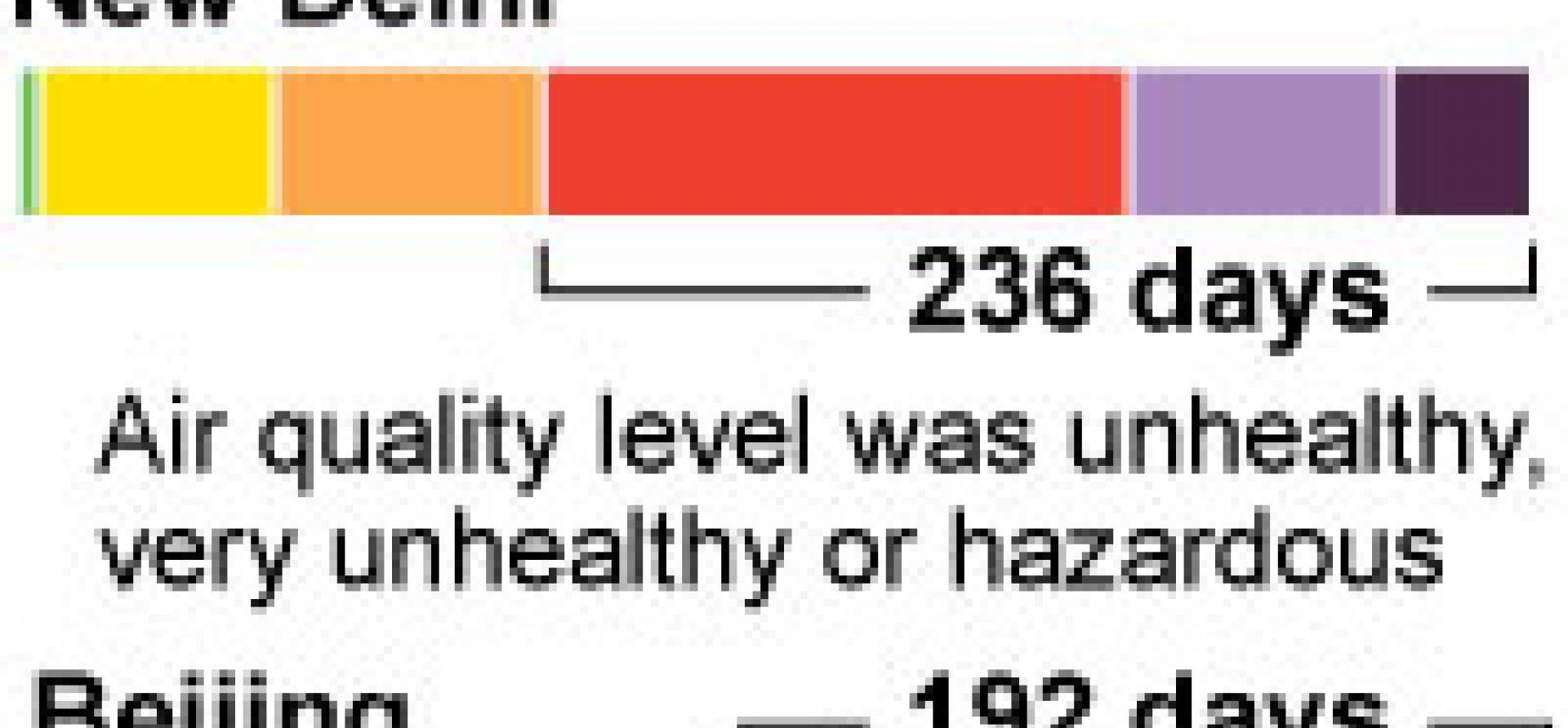Data Bite: Beijing Gets Lots of Attention for Its Dirty Air, but New Delhi’s Is Worse

Beijing’s severe air pollution has become internationally notorious. Depictions of the city typically show buildings barely visible in a heavy grey haze and crowds of people wearing masks. The global press paid particular heed this past December when the Chinese government began issuing “red alerts” during the worse bouts of bad air, closing factories and schools and ordering cars off the road.
India, by comparison, has gotten much less attention for its air pollution, which is worse than China’s. Data from recent monitoring of fine particulate matter by way of the U.S. embassies in New Delhi and Beijing shows that for 2015, New Delhi actually had a bigger air-quality problem. Air quality was considered unhealthy, very unhealthy or hazardous on 236 days of the year. Beijing, by comparison, recorded 192 such days. And New Delhi had nearly twice as many days with hazardous levels of pollution, 34 versus 18 in Beijing.
The problem was relentless: Air quality rated unhealthy or worse on every single day of five separate months: January, February, October, November and December.
The Air Quality Index used for these ratings is the standard used by the U.S. Environmental Protection Agency. It has six levels: good; moderate; unhealthy for sensitive groups; unhealthy; very unhealthy; and hazardous.
Beijing, unlike New Delhi, always had some days every month when the pollution level was moderate. But it also had one day, Dec. 25, when the air was so bad that it was literally off the EPA scale—worse than hazardous.
China’s air pollution extends far beyond Beijing. Most of it originates from coal-burning industrial areas, often hundreds of miles away from the Chinese capital. A study released in 2015 by Berkeley Earth found that 38 percent of the Chinese population—more than half a billion people—are breathing air that, on average, is considered unhealthy by U.S. standards. Such air can be deadly: the study estimated that air pollution contributes to 1.6 million deaths a year in China—more than 4,000 a day—about 17 percent of all deaths.
India, like China, often burns coal with minimal emissions controls, and it suffers from heavy pollution from cars and trucks. And as in China, the dire quality of air in New Delhi affects the health of millions of people. But neither the government nor the press seem to have embraced or acknowledged the problem to the same extent that it has been called out in China.
Look for the issue to gain a higher profile in India, however, as the country embarks on an ambitious electricity-sector transformation described last year in an in-depth report posted here by IEEFA’s Tim Buckley.
Government policies are already remaking energy markets in the world’s second most populous country. The high public-health price of abominable air pollution will only add impetus to these efforts.
This is to say nothing of pushback against coal-fired electricity from the stress it puts on India’s general water scarcity and water-delivery systems—given that the industry is so water intensive. This point is particularly relevant when compared against the low water usage of wind, solar, hydro, improved grid efficiency and energy-efficiency alternatives.
Seth Feaster is an IEEFA data consultant.
(Figures cited here are based on daily averages of particulate matter 2.5 microns and smaller, the form of pollution often considered to be most harmful to health, collected by the U.S. State Department. The department considers the data unofficial, not fully verified and subject to revision. The measurements have been converted to the Air Quality Index standards used by the U.S. E.P.A.)
















